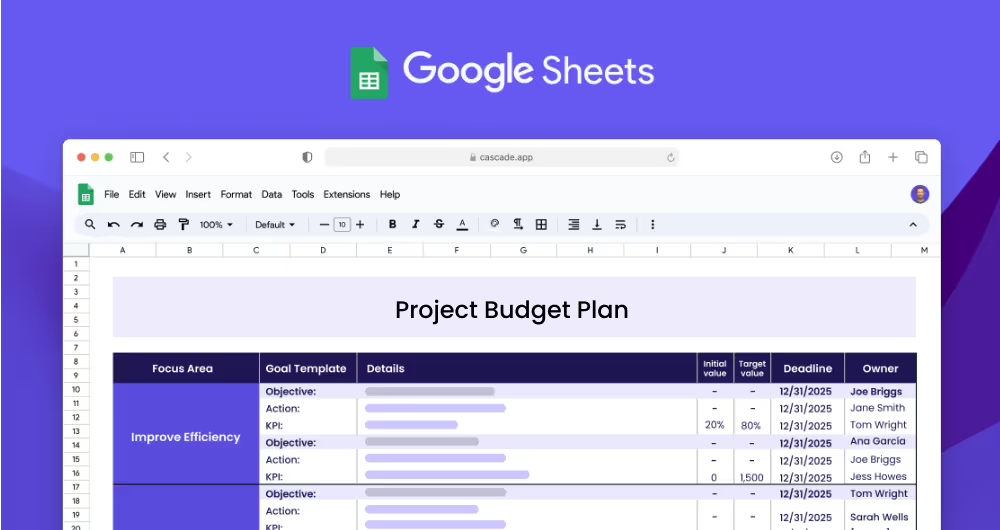A project budget plan outlines the financial resources required to complete a project. It outlines estimated costs for project components, as well as the total amount of money needed to complete the project. The plan is used to track progress and performance, and to ensure that the project is completed within the allocated budget. Additionally, the plan helps to identify potential risks, and allows project managers to make adjustments before the project goes over budget.
Each focus area has its own objectives, projects, and KPIs to ensure that the strategy is comprehensive and effective.
This project budget plan template is designed for project managers and teams from various industries to plan and monitor the financial activities of a project. It allows project teams to create a comprehensive budget plan and to track their financial resources in order to ensure their project is completed on time and within budget.
When creating a project budget plan, the first step is to identify your focus areas. A focus area is the overarching goal or objective of the project. Examples of focus areas could include budget planning, resource allocation, or project schedule. Having a clear focus area will help you to create your project budget plan in an organized and efficient manner.
Once you have identified your focus area, the next step is to determine the objectives that will support it. Objectives are the tactical steps that need to be taken in order to achieve the focus area. For example, if the focus area is budget planning, the objectives may include creating a project budget plan and monitoring project budget plan.
Once you have identified your objectives, the next step is to set measurable targets (KPIs). KPIs are actionable metrics that measure progress towards an objective. For example, if the objective is to create a project budget plan, the KPI might be the percentage of the project budget plan that is completed. Setting measurable targets will help you to track progress and performance, and to ensure that the project is completed within the allocated budget.
Once you have identified your KPIs, the next step is to implement projects that will help you to achieve them. Projects are the initiatives that need to be completed in order to reach your objectives. For example, if the objective is to create a project budget plan, the project might include drafting a budget plan and tracking financial activities. Implementing related projects will help to ensure that the project is completed on time and within budget.
If you’re looking for a way to elevate your strategic efforts and drive more effective outcomes quickly, Cascade Strategy Execution Software provides a powerful solution beyond the limitations of spreadsheets. Cascade’s platform offers tools including real-time updates, centralized collaboration, and automated reporting, enabling your team to maintain a laser focus on achieving strategic goals while staying aligned across all levels. Sign-up for free or book a demo with one of our strategy experts to see how you can transform your strategic planning and execution.


